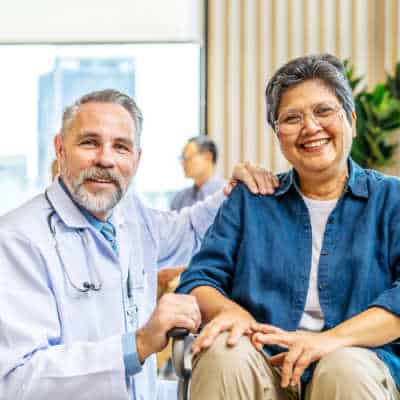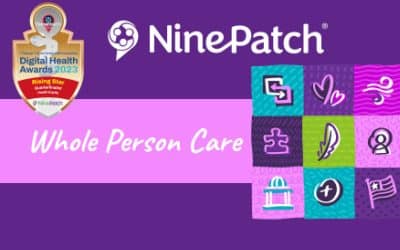
Understanding health related social needs vs. social determinants of health benefits from taking a dual perspective. Organizations are further defining the meaning of SDOH and HRSN, previously thought to be interchangeable. This shift in usage is happening as the number of initiatives grow that require collaboration of efforts between health, behavioral health, mental health, and social care providers.
The Bridge Between Health and Social Care
The Centers for Medicare and Medicaid (CMS) use the term health related social needs. For example, HRSN is referenced in Medicaid, Medicaid Managed Care, and Medicare Advantage proposed and final rules. Looking at this from a dual perspective, a recent state demonstration project for re-entry and care transitions relates health related social needs with the importance of addressing social risk circumstances.
SDOH factors and circumstances
SDOH are neutral factors associated with where people are born, live, work, and age. For example individuals do not control the geographic location of their birth. The economic stability or physical environment of a town or city is determined by forces beyond individual control. Aging is a factor of time.
So, social factors alone do not result from personal choice. This reaffirms that the ability to impact the larger forces of social determinants of health is beyond the scope of practice for hospitals, health care systems, primary and specialty care, and other providers.
The examples of “needing groceries” or “having access to healthy food” are social circumstances that can impact health. Health, behavioral, and mental health providers alone cannot:
- Impact individual earning capabilities so that money is available to purchase groceries
- Provide access to a car or public transportation so individuals can get to a grocery store
- Prevent a circumstance that results in an individual becoming homebound and unable to go to a grocery store
However all healthcare specialties can coordinate care with social agencies whose focus is to help individuals gain employment and financial stability, provide access to transportation, or coordinate services for elderly and disabled persons.
Health related social needs result from SDOH circumstances
As a result of defining social circumstances and health related needs, the term “health related social needs” has become standard terminology for clinical providers. Health and healthcare is impacted by life circumstances that arise from individually uncontrollable social factors.
According to a National Academy of Science publication, approaches to respond to health risk factors, resulting from daily life circumstances, can improve primary prevention and the treatment of acute and chronic illness.
In clinically focused organizations, social care may be thought of as an “add-on.” However, healthcare providers who make time to discuss unstated concerns with patients—for example being unemployed, lacking transportation or experiencing family conflict—may understand why patients do not follow through with medical recommendations.
Community-based provider efforts link to addressing health related social need concerns
Health, human service, and community-based organizations typically use the term social determinants of health vs health related social needs. Employees of these organizations work and live in the cities and neighborhoods where they witness clients experiencing daily challenges.
Vulnerable individuals benefit from community-wide social care programs. These include housing, food insecurity, transportation, employment, legal, mental health, behavioral health, aging services, and youth focused supports. These programs are not clinical in nature.
Social care providers who complete sdoh assessments, coordinate high-value services, and support vulnerable populations help stabilize the daily lives of their clients. When life circumstances are stable, clinicians and patients can work together to address chronic health concerns. Better health translates to better quality of life.
The Complex Needs of Vulnerable Populations
Medicaid and managed care programs focus on serving the most vulnerable populations, many who receive medical care in hospital emergency rooms. These individuals often have complex needs that benefit from attention upon discharge. These needs include housing and treatment for behavioral health, mental illness, or substance use disorders.
Hospitalized patients who use drugs are more likely to experience general instability, a lack of housing, and use emergency rooms as a primary place of healthcare access. Additionally, seniors, disabled persons, adults or children with complex health needs benefit from ongoing post hospital clinical and social care coordination.
Social needs impact the health of at-risk individuals. Other examples include vision problems that make it difficult to read a prescription label or printed post hospital discharge instructions, the ability to mathematically calculate an insulin dose, or a language barrier that prevents care coordination.
As a result of health and social needs, use of care coordination software and closed loop referral systems is essential to provide the right care at the right place at the right time. Combined with access to software programs and ease of data exchange, creating a local network of service providers who can positively impact needs reduces concerns about what happens after making a referral.
Providers know that vulnerable people lose trust in the system if anything falls apart during the referral process. When referrals fail to product results, individuals can become more hesitant to share personal information preventing coordination of social and clinical care delivery.
Successful workflows feature the ability to obtain consents, assess and determine needs, refer individuals to providers or services with the click of a button, receive confirmation that the referral was received, and confirm that an individual followed up, all in a timely manner.
Social and Health Care Data Sharing
Delivering upon commitments to improve health equity, population health, access to services, and support people in the conditions where they live is challenging. Sharing data between government, county, health, social, legal, prison, educational systems, trauma recovery, pharmacy, long term care, home health and a myriad of other organizations may not be a seamless event.
The benefits of interoperability are a well-recognized need across health and social channels. While interoperability programs for data sharing and exchange are underway across the nation, states and local communities, much work remains to be done.
Organizations that successfully integrate social care and clinical care adopt a dual perspective. Communities that convene about health-related social needs vs social determinants of health initiatives set common goals and processes. When local organizations have specific goals in mind, program utilization increases.
For example, data collection and analysis can result in efforts to reduce costs and improve outcomes for value-based care organizations. To support the need for clinical data, community-based organizations can complete and share data about SDOH screenings and initiate cross community referrals.
Admittedly, the operational considerations for social care integration across clinical and social care organizations are complicated. Cross sector technology integration works when organizations commit to use programs that support shared goals and outcomes. This is proven by states and local communities reporting program success.
The Impact of Efforts on Client and Patient Care
While clinical organizations previously prioritized emergent or sick care over social care integration, current efforts are increasing the focus on combining health and social care delivery.
Managed care and value-based models prioritize quality of care. As a result, payers, providers, and social care organizations are developing or extending health and community information exchanges across counties or within states.
These efforts include providing access to programs that offer whole person and family care coordination features. The benefit for individuals is less runaround and a better experience accessing services like housing, transportation, and medical care.
Configurable sdoh software solutions from NinePatch support successful program implementation for community organizations desiring to connect multiple databases across organizations that may have disparate software systems.
NinePatch Community Convener Services takes the next step to connect organizations and individuals in local communities. The combination of people working together to use software solutions configured to local needs ensures the success of social determinants of health and health related social need programs.
Care Transitions for Health Related Social Needs vs Social Determinants of Health
Care transitions can pose risks for vulnerable populations if not carefully orchestrated. Coordinated pre- and post discharge care planning and coordination of social care services is critical for hospital, skilled nursing, and incarcerated individuals.
For these individuals returning to a stable life can be challenging. Following up with medical care may be difficult. Some may not be able to fill prescriptions in a timely manner or they may not have reliable housing. Gaps in in any one of these areas, can result in hospital re-admission.
Care coordination and closed loop referrals are an integral part of whole person and family care. Developing person centered care plans that include social determinants of health needs, like homelessness, transportation, or food needs, increases the success rate of community transitions.
Care managers in clinical organizations can work with community-based care coordinators to ensure smooth hospital to community to home transitions. Many times, community-based staff hand holds or walks individuals through the process to complete applications and access services.
Supporting vulnerable populations requires the efforts of individuals with a variety of skills, experiences and knowledge of local programs and services. When clinical and social care organizations embrace what makes them different, yet similar, both can work toward improving lives in local communities and across states.
NinePatch brings communities together. If you’d like to learn more about NinePatch SDOH software solutions schedule a DEMO today.
Stay Up To Date
NinePatch® Recognized as Quarterfinalist for the Digital Health Hub Foundation: Digital Health Awards
NinePatch is a Rising Star in the Health Equity Track KNOXVILLE,...
SDOH and Care Coordination Programs and Funding
SDOH care coordination and funding is available from federal, state,...
Whole Person Healthcare Model Insights and Opportunities
A whole person healthcare model combines physical, behavioral, and...




